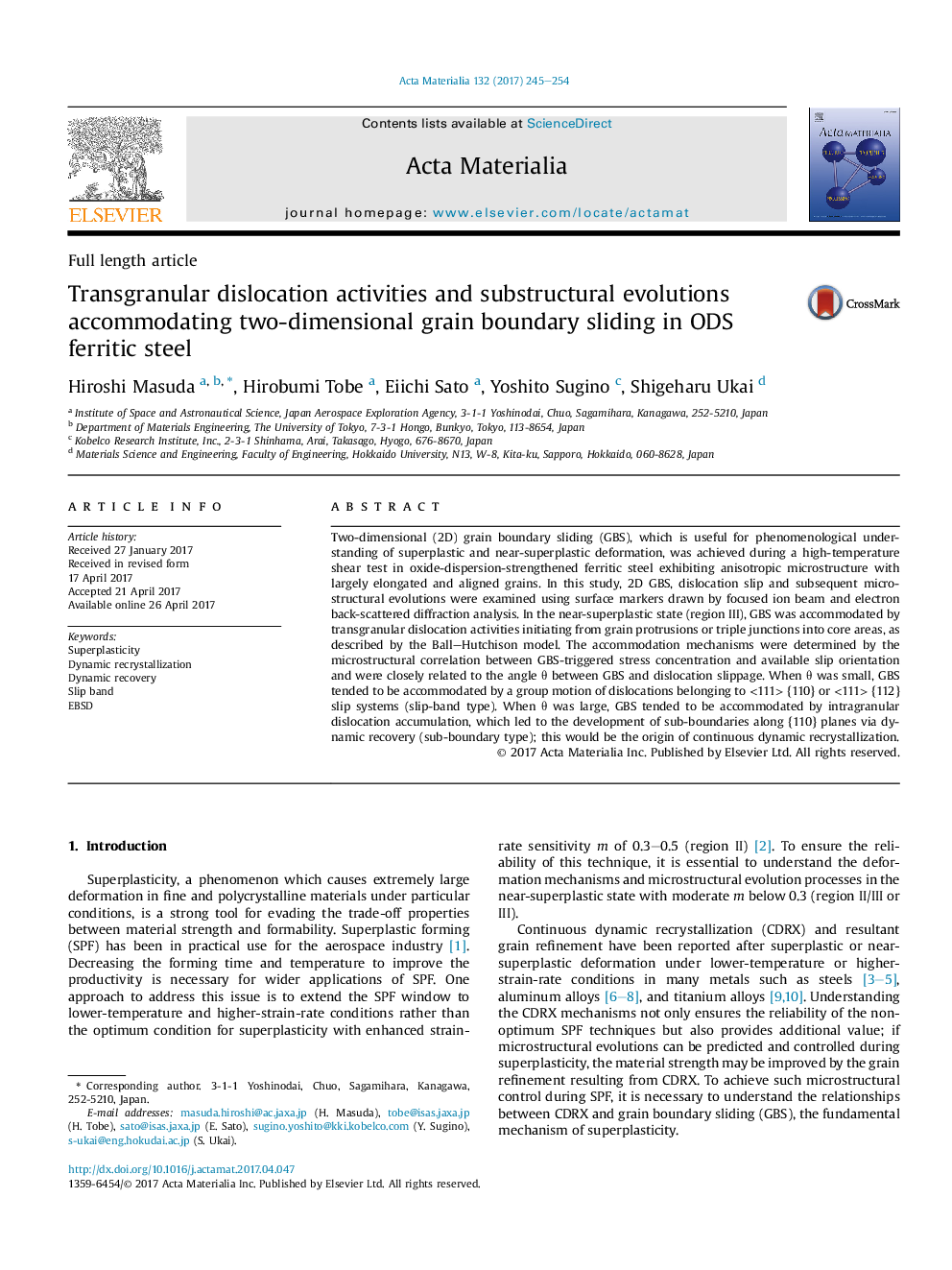| Article ID | Journal | Published Year | Pages | File Type |
|---|---|---|---|---|
| 5436160 | Acta Materialia | 2017 | 10 Pages |
Two-dimensional (2D) grain boundary sliding (GBS), which is useful for phenomenological understanding of superplastic and near-superplastic deformation, was achieved during a high-temperature shear test in oxide-dispersion-strengthened ferritic steel exhibiting anisotropic microstructure with largely elongated and aligned grains. In this study, 2D GBS, dislocation slip and subsequent microstructural evolutions were examined using surface markers drawn by focused ion beam and electron back-scattered diffraction analysis. In the near-superplastic state (region III), GBS was accommodated by transgranular dislocation activities initiating from grain protrusions or triple junctions into core areas, as described by the Ball-Hutchison model. The accommodation mechanisms were determined by the microstructural correlation between GBS-triggered stress concentration and available slip orientation and were closely related to the angle θ between GBS and dislocation slippage. When θ was small, GBS tended to be accommodated by a group motion of dislocations belonging to <111> {110} or <111> {112} slip systems (slip-band type). When θ was large, GBS tended to be accommodated by intragranular dislocation accumulation, which led to the development of sub-boundaries along {110} planes via dynamic recovery (sub-boundary type); this would be the origin of continuous dynamic recrystallization.
Graphical abstractDownload high-res image (318KB)Download full-size image
